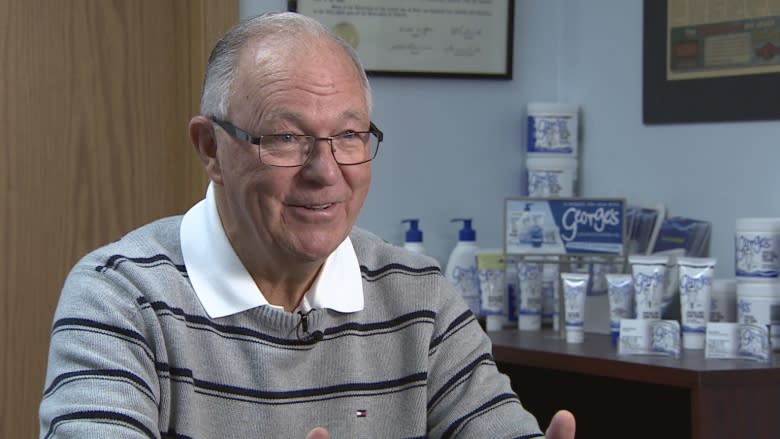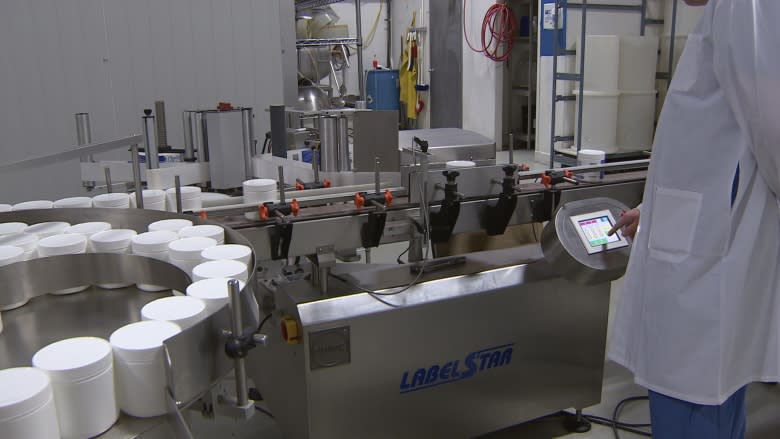Calgary success story George's Cream readies to enter Chinese market
A Calgary pharmacist didn't know what he was getting into when a dermatologist asked him to create a cream for the cold and dry Alberta market more than 20 years ago, but with massive success and a new owner, the product is ready to enter the Chinese market.
"It had to be a very basic cream but it had to be really thick and rich and work on Alberta's dry skin," George Doherty told CBC News.
Around 1995, Doherty, along with business partner Skip Gibson, owned a pharmacy at Market Mall.
George's Cream actually started out with a different name — Professional Centre Pharmacy's Dry Skin Cream.
"It was a very long name and people didn't like that so it was recommended that we call it George's Cream. Nice and simple. Doctors could say, 'Go get some George's Cream,'" Doherty said.
Initially, Doherty developed the product in his kitchen.
"I brought in my wife's cake mixer and started using it and it really just magically turned into a much whiter, creamier cream, and that was the formation of George's Cream," he said.
"There is a secret to that, which I can't share. That's what ended up being patented, was the process not necessarily the ingredients."
The packaging stood out on retail shelves because it looked different that most creams and lotions.
"It was a little confusing at first because people thought it was a men's product," Doherty said.
"It took some education and some sampling. We probably went into 40 women's shows over a period of 10 years, sampling and talking to women, and getting them to realize it was for the whole family."
About two years ago, Doherty and Gibson sold the brand to a Calgary man, who is preparing to launch the product in China.
But the product will continue to be manufactured in Calgary.
"It's imperative for him to have it made in Canada," Doherty said.
He says, looking back, the biggest challenge was getting brand recognition when competing with huge multi-national companies that produce a similar product.
"The problem is getting the public to know about your product," Doherty said.
"Usually, the way to do it is to spend $10 million on television but that doesn't always work either. If it's not a great product, it doesn't matter how much money you throw at it, it is not going to stay around."




